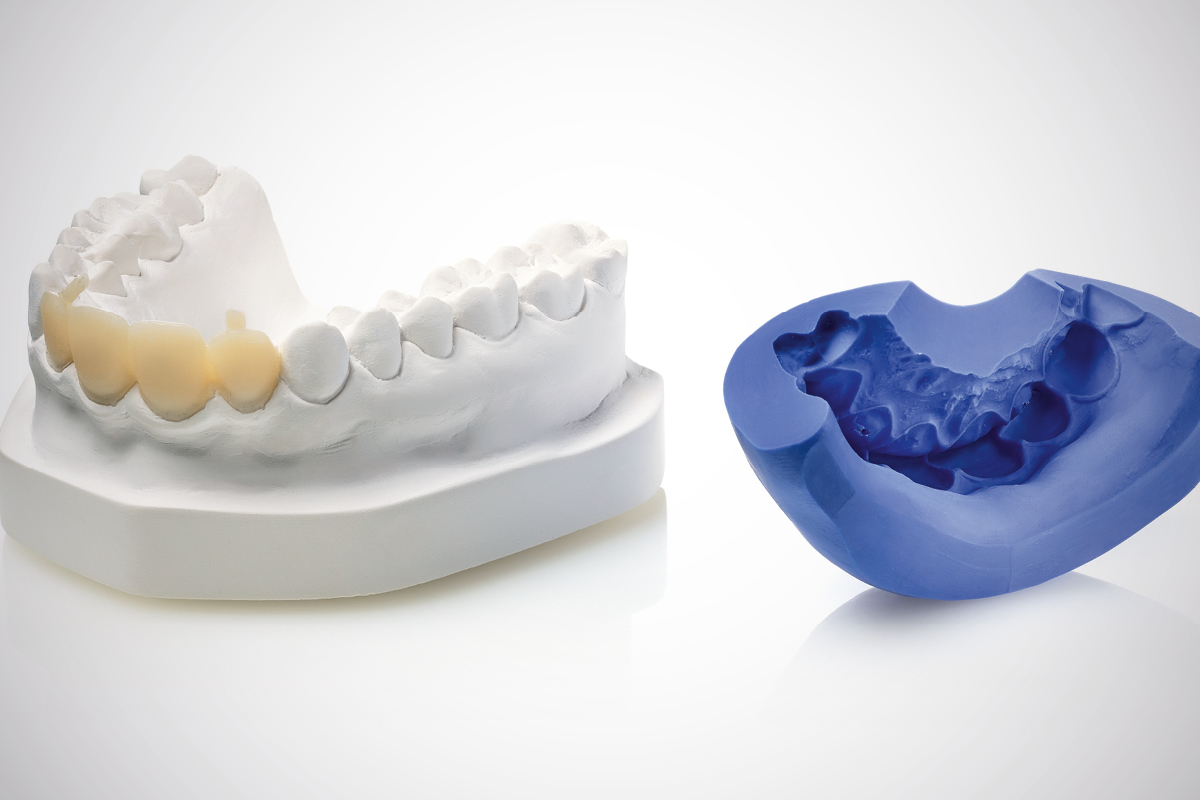
A temporary restoration is a provisional restoration made to improve the cosmetic result, stability and function of the prepared tooth or teeth in the time between the preparation of the tooth and the placement of the final prosthesis. (1) The temporary phase often has the purpose of establishing the effectiveness of the treatment plan and analysing the shape and function of the future final prosthesis. (2)
From the dentist’s point of view, temporary restorations represent a fundamental step for the success of the treatment within a rehabilitation process. Indeed, the success of this treatment phase allows the dentist to win the patient’s trust and has a favourable impact on the final success of the permanent restoration.
In order for it to serve its purpose properly, clinical literature has identified a series of characteristics that temporary restoration material should ideally possess in order to offer optimum performance. [3]
- resistance to stress;
- limited polymerization shrinkage;
- safety for the tissues;
- appropriate working and setting times;
- color stability;
The materials commonly used to make temporary prostheses are acrylic resins and composite resins. (4,5) The latter possess better mechanical characteristics in terms of flexural strength and hardness (5).
Acrylic resins:
- PMMA (polymethyl methacrylate)
Polymethyl methacrylate or PMMA is a self-curing resin material supplied in powder/liquid form for manual mixing.
It is a resistant material, with good mechanical and cosmetic characteristics, but also has high polymerization shrinkage and a strongly exothermic reaction, it releases harmful free monomer and has poor abrasion resistance. Due to their highly exothermic reaction and free monomer release, PMMAs are better suited to indirect techniques. Furthermore, according to clinical literature, the mechanical characteristics of the material deteriorate over time due to the absorption of saliva inside the oral cavity.
- PEMA (polyethyl methacrylate)
Polyethyl methacrylate or PEMA is a self-curing acrylic resin in powder/liquid form for manual mixing.
Compared to PMMA, this material affords lower polymerization shrinkage, a less exothermic reaction during polymerization and better biocompatibility. It is also easy to polish.
However, its mechanical characteristics are inferior to those of PMMA, and its color stability is poor
Composite resins:
Composite materials are described in literature as being rigid but brittle. As a matter of fact, although their implicit rigidity affords excellent mechanical properties such as hardness and flexural strength, it also represents a limit when the stresses exceed a certain level. Indeed, as they do not afford much plastic deformation, when subjected to stresses that exceed the proportional limit, composite materials tend to fail without deforming.
- Bis-GMA (bis-glycol-dimethacrylate)
Bis-acryl resins or Bis-GMA are supplied in paste-paste form (in cartridges for semi-automatic mixing) and are available as self-curing, light-curing and dual-curing versions.
They offer better mechanical properties than PMMA and PEMA, low polymerization shrinkage, a less exothermic reaction, good color stability over time and a certain degree of rigidity.
- UDMA (urethane dimethacrylate)
Urethane dimethacrylate or UDMA is a paste-paste bicomponent resin supplied in cartridges for semi-automatic mixing, available as self-curing and dual-curing versions.
It offers good abrasion resistance, good color stability over time and does not contain bisphenol A.
We will now focus on the techniques for making temporary prostheses.
There are three main techniques for making temporary restorations (6):
- direct technique;
- pre-filing indirect technique;
- post-filing indirect technique.
The direct technique is performed entirely at the dental practice by the dentist, in a single session.
This technique therefore brings a number of advantages, such as the possibility of not having to involve a dental laboratory for the intermediate processing steps, making it possible to shorten the overall time needed to complete the work, doing away with the need for a series of practice appointments.
However, as the technique involves the fabrication of the temporary prosthesis directly on the patient’s abutments, it brings certain disadvantages, such as the greater exposure of the prepared tooth to potential traumas due to the increase in the temperature of the resin or the release of free monomer (if the material used contains it), poorer marginal adaptation and lengthy chair times.
With the pre-filing indirect technique, the temporary prosthesis is fabricated by a dental technician in a laboratory before the dentist prepares the tooth on which it is to be fitted.
If we consider the advantages of this technique, we can say that after the tooth preparation phase no further appointments are required, resulting in considerable time saving for both the dentist and the patient. In this case, the temporary prosthesis is merely relined inside the patient’s mouth, meaning that less resin is used, resulting in a more limited exothermic reaction and a smaller quantity of free monomer.
However, on the other hand, this technique involves a preliminary impression phase before the preparation phase in order to allow the laboratory technician to study and fabricate the temporary prosthesis before preparing the abutments.
In addition, the restoration received from the laboratory may require a number of adjustments before the final result is achieved.
Unlike the direct technique, with the post-filing indirect technique the temporary restoration is fabricated in the dental laboratory by the laboratory technician, before being sent to the dental practice to be positioned in the patient’s mouth. The laboratory preparation phase brings a number of advantages, such as the possibility of sparing the abutment potential damage caused by free monomer and the heat developed by the resin during polymerization, better margin adaptation and shorter chair times than required with the direct technique.
On the other hand, however, the indirect technique presents a number of disadvantages, such as the need for the dentist to interact with the dental laboratory and the consequent need to make multiple appointments in order to complete the procedure. The indirect technique also involves the possibility of damaging the diagnostic models created from the first impression.
Acrytemp is the Zhermack solution for temporary restorations: it is a self-curing bis-acryl resin that is suitable for short and long-term temporary restorations with high failure resistance. It is available in 50 ml cartridges in shades A1, A2, A3, a3.5 and B1.
Bibliography
[1] The Glossary of Prosthodontic Terms: Ninth Edition. J Prosthet Dent. 2017 May;117(5S):e1-e105. DOI: 10.1016/j.prosdent.2016.12.001. PMID: 28418832
[2] Shillingburg H, Sather D, Wilson E, Cain J, Mitchell D, Blanco L, Kessler J. Fondamenti di protesi fissa. 2014
[3] Patras, Michael, et al. Management of provisional restorations’ deficiencies: a literature review. Journal of esthetic and restorative dentistry. 2012; 24.1: 26-38
[4] Tom, T. Nigel, et al. Provisional restorations: An overview of materials used. Journal of Advanced Clinical and Research Insights, 2016; 3.6: 212-214
[5] Astudillo-Rubio D, et al. Mechanical properties of provisional dental materials: A systematic review and meta-analysis. PloS one, 2018; 13.2: e0193162
[6] Regish, K. M., Sharma, D., & Prithviraj, D. R. (2011). Techniques of fabrication of provisional restoration: an overview. International journal of dentistry, 2011.
Are you interested in Zhermack's materials and solutions?
Contact usTags
provisional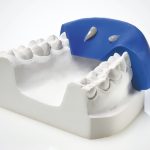
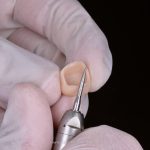
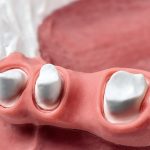
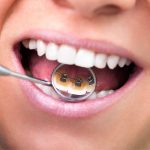

 Zhermack SpA has been one of the most important producers and international distributors of alginates, gypsums and silicone compounds for the dental sector for over 40 years. It has also developed solutions for the industrial and wellbeing sectors.
Zhermack SpA - Via Bovazecchino, 100 - 45021 Badia Polesine (RO), Italy.
Zhermack SpA has been one of the most important producers and international distributors of alginates, gypsums and silicone compounds for the dental sector for over 40 years. It has also developed solutions for the industrial and wellbeing sectors.
Zhermack SpA - Via Bovazecchino, 100 - 45021 Badia Polesine (RO), Italy.


